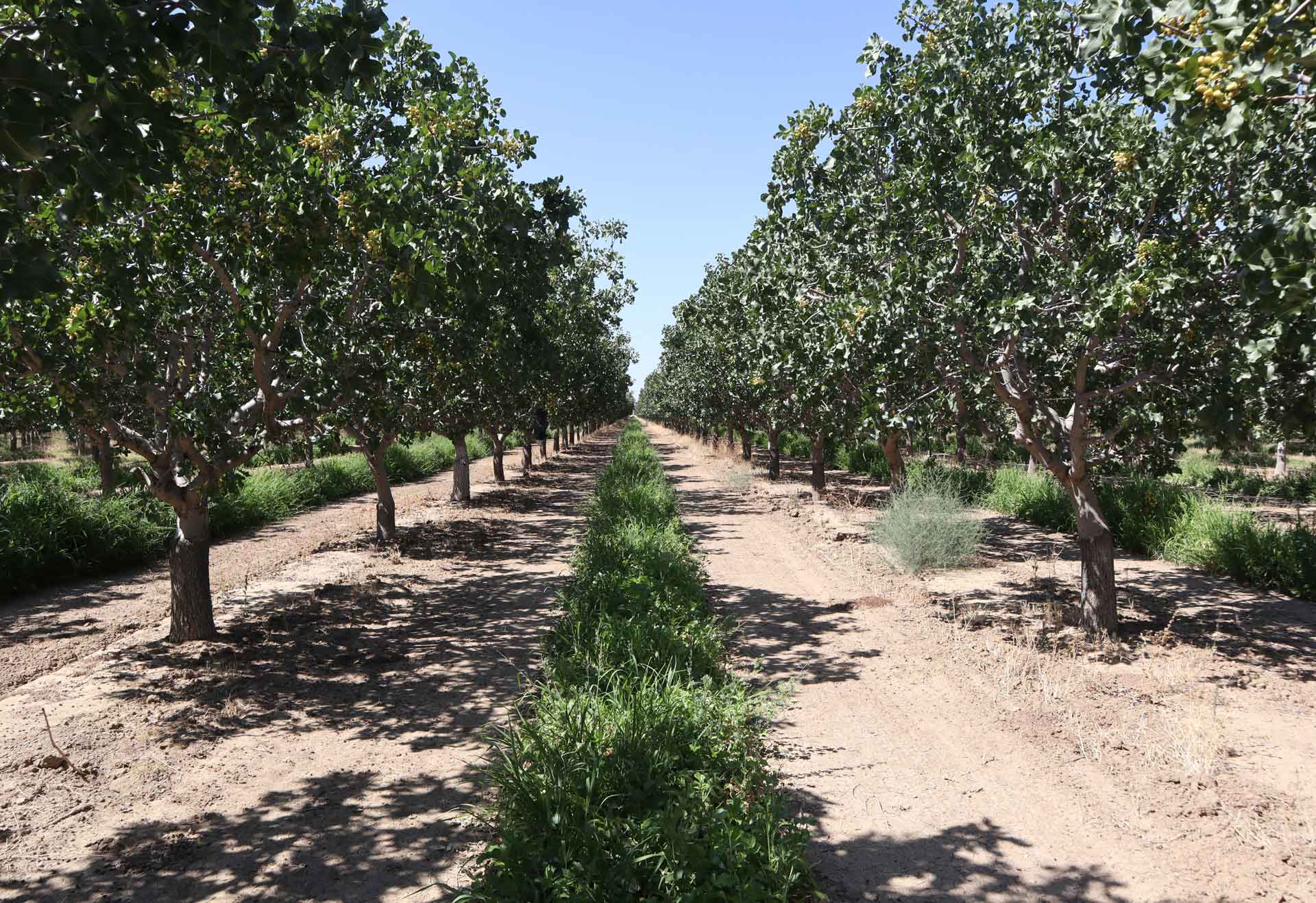
A unique center-line drip irrigation system in a certified organic pistachio orchard presented University of California (UC) researchers with an opportunity to evaluate the use of summer trap crops to manipulate plant bug populations and determine if the trap crop will be of value for monitoring pest population levels.
Small and large bugs in pistachio orchards can cause damage to the developing nuts, especially in the early season. Small bugs include Calocoris, Phytocoris and Lygus while large bugs consist of various stink bugs and leaffooted bugs. These pierce-suck feeders puncture the nuts, which can lead to epicarp lesion, aborted nuts, kernel necrosis and/or fungal contamination such as stigmatomycosis.
Houston Wilson, an assistant cooperative extension specialist (Department Entomology, UC Riverside) based at the Kearney Agricultural Research and Extension Center in Parlier said he and collaborators Kent Daane (UC Berkeley), Judith Stahl (UC Berkeley) and Rob Straser (UC Riverside) are in the second year of a two-year study funded by the California Pistachio Research Board to evaluate the use of trap crops to control and/or monitor small and large bugs in organic pistachio.
Trap crops work by drawing pests away from the target crop, in this case by planting summer cover crops that are highly attractive to small and large bugs, which would in turn keep them away from pistachios early in the season when developing nuts are most vulnerable. The trap crop could then possibly be sprayed or mown to reduce pest numbers.
Small and large bug populations are typically monitored in orchards by sampling tree canopies, which Wilson says can be time consuming and labor intensive. He noted that this trap crop could potentially help improve monitoring as well, by aggregating the target insects in an area that is easier to sample with sweep nets. In this way, the trap crop could serve as an early indicator when small and large bugs are colonizing the orchard.
Finally, if the trap crop supported beneficial insects it could also serve as a biocontrol option, Wilson said, although he noted that this is not the primary focus of this trap crop study.
The field trial itself is taking place in a 180-acre block of organic pistachio trees. The trap crop—a mixture of alfalfa, vetch and mustard—was planted in the row middles where it receives water from the modified drip-irrigation setup. Control plots contain resident weedy vegetation growing in middles as a comparison. All plots are sampled twice a month from May-October, using sweep nets to collect insects from the ground covers and beat sampling to monitor insects in the tree canopy. The pistachio crop itself is also sampled for damage over the season and at harvest.
Wilson said results from Year 1 showed that while the small and large bug populations were higher in the trap crop than in resident weedy vegetation, that didn’t necessarily translate into lower pest populations in the tree canopy itself. However, beneficial and predatory insects were also in greater numbers in the trap crop and parasitoid populations increased in the tree canopies in the trap crop plots—although it is unclear whether this led to any increase in biological control of small and large bugs. Finally, there was no difference in crop damage or insect infestation in pistachio collected from trap crop and control plots.
Results from the first year did give the research team some insight on managing this unique approach to trap crops. Going forward, Wilson said additional trap crop species would likely be evaluated. Another possible approach might be to plant the trap crop outside of the orchard, rather than in row middles.











